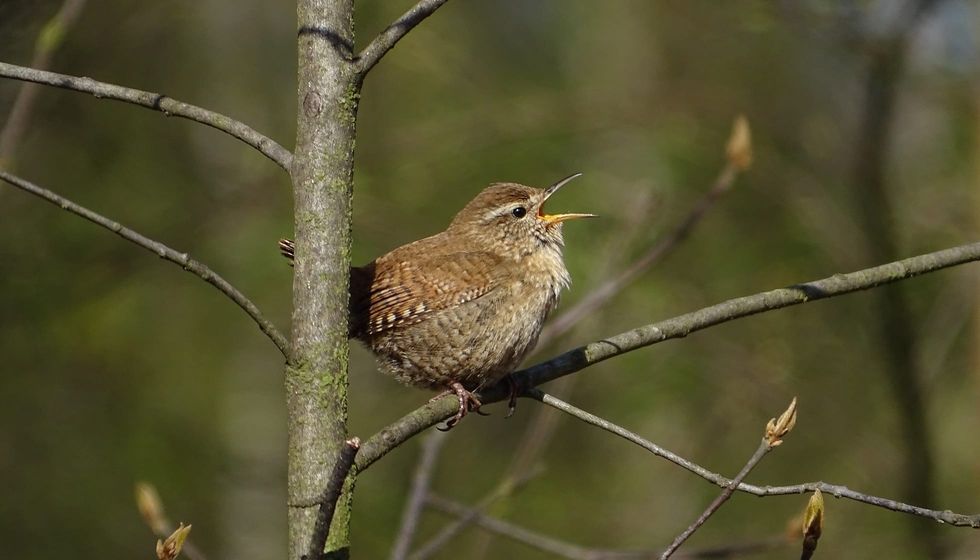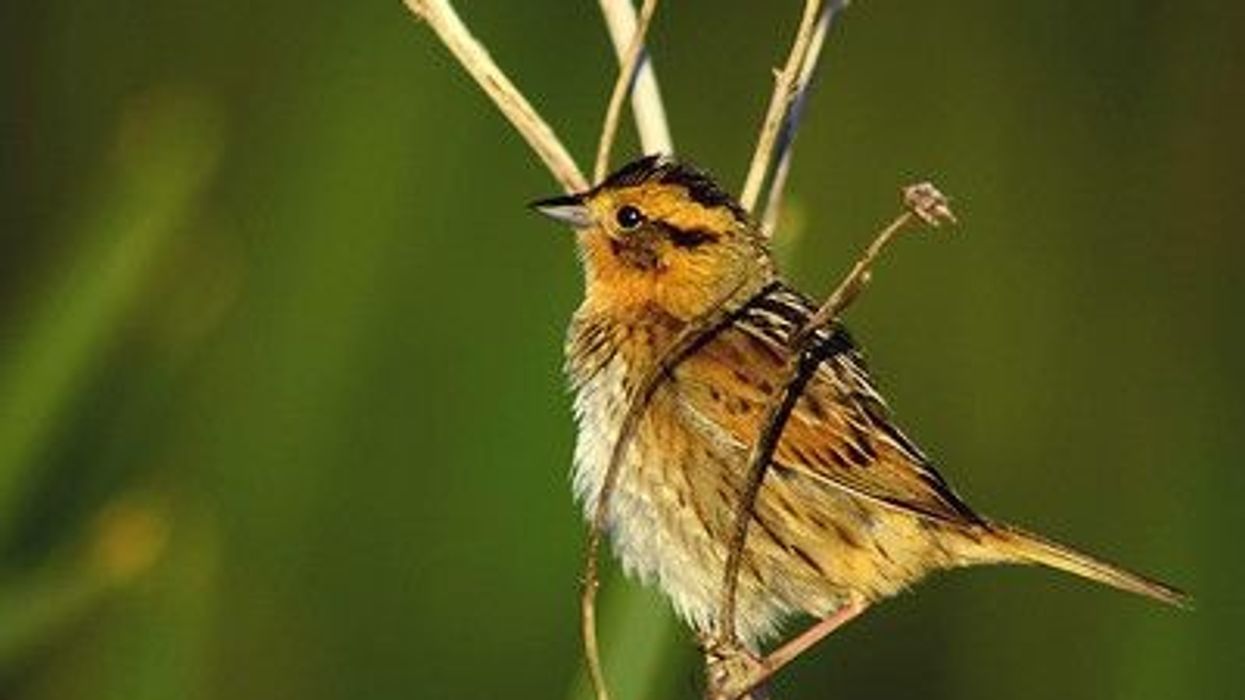Is your favorite pastime spending time amidst nature hearing the pleasant chirping of the birds and sighting beautiful species around you? Wrens are small birds mostly having a brown plumage are known for their spectacular singing.
A musician wren (Cyphorhinus arada) is a species of the wren.
Surprisingly, it is speculated that when the musician wren starts singing, other species of birds stop to enjoy the melodious song of the bird!
It has several vernacular names in various languages like troglodyte arada in French, cucarachero musical or chochín musical in Spanish, uirapuru in Portuguese, and is also called organ wren, musician wren bird, or southern musical-wren in various states of the world. Furthermore, the scientific name of the bird have synonyms like Cyphorhinus modulator, Cyphorhinus salvini, and Leucolepis modulator.
The birds have six subspecies recognized having variations in their vocal music, plumage, and location. The subspecies recorded are Cyphorhinus arada arada, Cyphorhinus arada salvini, Cyphorhinus arada modulator, Cyphorhinus arada interpositus, Cyphorhinus arada transfluvialis, and Cyphorhinus arada griseolateralis.
If the uniqueness of the musician wren makes you interested to read more about similar species, you can read about blue jay facts and blackpoll warbler facts.
Musician Wren Interesting Facts
What type of animal is a musician wren?
The musician wren (Cyphorhinus arada) is a species of wren known for its magnificent and loud song. It was considered conspecific to the song wren (Cyphorhinus phaeocephalus) and is closely related to the chestnut-breasted wren (Cyphorhinus thoracicus).
According to the search, it has six recognized subspecies: Cyphorhinus arada arada, Cyphorhinus arada salvini, Cyphorhinus arada modulator, Cyphorhinus arada interpositus, Cyphorhinus arada transfluvialis, and Cyphorhinus arada griseolateralis.
What class of animal does a musician wren belong to?
The musician wren belongs to the family Troglodytidae, the class Aves, and the genus Cyphorhinus. It was considered conspecific to the song wren (Cyphorhinus phaeocephalus) and is closely related to the species of its genus, i.e.
song wren and chestnut-breasted wren. It is also known as troglodyte arada, cucarachero musical, chochín musical, uirapuru, organ wren, musician wren bird, southern musical-wren, Cyphorhinus modulator, Cyphorhinus salvini, and Leucolepis modulator.
How many musician wrens are there in the world?
While the musician wrens are listed as Least Concern under the IUCN Red List of Threatened Species, the population range of the bird around the world is not quantified so far. Though no reliable search data highlights the estimated number, the musician wrens are speculated to have a large range.
Where does a musician wren live?
The musician wren, with neotropical regions as its native habitat, is widespread in South America but the musician wren range map highlights variations depending on its subspecies.
The Cyphorhinus arada arada is found in Guyana, eastern Venezuela, and northern Brazil in South America, the Cyphorhinus arada salvini resides throughout Colombia to Peru (South America), the Cyphorhinus arada griseolateralis is found throughout Brazil, America, and Cyphorhinus arada interpositus, Cyphorhinus arada modulator, and Cyphorhinus arada transfluvialis range in and around Brazil, the largest state of South America.
No data speculates whether the species of musician wren migrate.
What is a musician wren's habitat?
According to the search reports, the musician wren habitat is speculated to range throughout the neotropical regions such as lowlands and rainforests.
Who do musician wrens live with?
While the musician wrens are hard to sight, it is the musician wren song and call of the bird commonly heard throughout South America. The birds either lead a solitary life or are found in pairs.
How long does a musician wren live?
The lifespan of the musician wren is not documented under the search reports.
How do they reproduce?
While the search reports do not have an elaborated reproductive mechanism recorded, the species of musician wren nest in July-September. The musician wren egg is laid by the female, the clutch size ranges up to two eggs.
What is their conservation status?
Among the species listed as Least Concern under the IUCN Red List of Threatened Species is the musician wren. Musician wrens are at no major risk except for climate change.
Musician Wren Fun Facts
What do musician wrens look like?
The musician wren appearance varies among its subspecies of the musician wren. The musician wren bird has brown plumage with black and white strikes over its collar. Also, the bird has a white ring around its either eye. Some of its subspecies have white markings on their face other than the eyering.
Furthermore, the musician wren feathers and tail are barred. Also, other subspecies show variations in their appearances but are mostly brown, gray, black, and white. The musician wren bill is curved and has a gray sheen.

*Please note that the main image and this image are of a Eurasian Wren, not a musician wren. If you have an image of a musician wren, please let us know at hello@kidadl.com.
How cute are they?
Being one of the smallest species of birds, the musician wren is one of the cutest creatures. Also, the musician wren beak has a silvery sheen attracting a large group of humans. Moreover, the musician wren in flight is another pleasant sight, while the musician wren sound is a pleasure to the ears.
How do they communicate?
The musician wrens communicate by singing. The musician wren call is a harsh and loud 'churk'.
The song of the birds or the bird's music is mostly jazzy. It is also found that when the bird sings its song, other species of birds stop enjoying the music. The birds are known to live up to their name with their song having a piece of melodious music.
How big is a musician wren?
The musician wren is as long as 4.9 in (12.5 cm), while the musician wren wingspan is not recorded. It is twice the size of a hummingbird, the smallest bird around the world.
How fast can a musician wren fly?
While the wren is recorded to fly at a speed of 15-28 mph (24-45 kph), the musician wren flying speed remains undeciphered. The musician wren flight is speculated to rise as high as 4600 ft (1402 m). On the other hand, the peregrine falcon is recorded to be one of the fastest species of birds.
How much does a musician wren weigh?
The weight of the musician wren ranges within 0.6-08 oz (18-24 g). On the other hand, a kori bustard is recorded to weigh the heaviest among the species of birds around the world.
What are the male and female names of the species?
The musician wren male and musician wren female do not have sex-specific names.
What would you call a baby musician wren?
The musician wren baby is also called a chick, hatchling, fledgling, or nestling.
What do they eat?
The musician wren diet comprises invertebrates. Their predatory habits show that they mostly prey on insects such as spiders and ants, crustaceans, and berries. The species is also found to follow army ants.
Are they dangerous?
No, the birds are not found to pose any sort of danger. Though the birds are predatory but do not harm humans.
Would they make a good pet?
No, the birds might attract you with their song and melodious music tone, but they do not make an ideal pet. While no reports reflect the behavior of the musician wrens in captivity, it is advised to keep them free.
Did you know...
The bird has several subspecies, i.e Cyphorhinus arada arada, Cyphorhinus arada salvini, Cyphorhinus arada modulator, Cyphorhinus arada interpositus, Cyphorhinus arada transfluvialis, and Cyphorhinus arada griseolateralis.
The song of the bird is a pleasure to hear. When the bird sings, all other species stop to listen to its music.
The birds have a confined breeding season that ranges from July to September.
What's special about a musician wren?
The bird's ability to sing a spectacular song makes it one of the special and beautiful species. Also, the species of musician wren camouflage with its surroundings to prevent the risk of being caught by its predators.
How did the musician wren get its name?
The bird's ability to sing a melodious piece of music justifies the origin of the musician wren name. It is recorded that it is one of the melodious species of bird around the world. Moreover, it is recorded that all the birds stop when the musician wren sings. Also called a uirapuru, the bird is celebrated for its music.
Here at Kidadl, we have carefully created lots of interesting family-friendly animal facts for everyone to discover! For more relatable content, check out these mountain chickadee facts and canyon wren facts for kids.
You can even occupy yourself at home by coloring in one of our free printable musician wren coloring pages.










